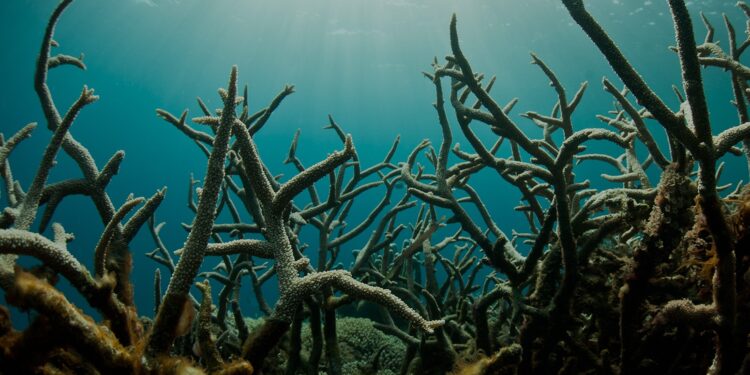The world’s oceans are undergoing a profound and often overlooked transformation: they are becoming increasingly acidic. Scientists now warn that ocean acidification, driven by relentless carbon emissions, is not a distant threat but an accelerating crisis with wide-reaching consequences for marine life, global food systems, and climate stability itself.
When carbon dioxide (CO₂) is released into the atmosphere—primarily through the burning of fossil fuels—around a quarter of it is absorbed by the oceans. This process creates carbonic acid, gradually lowering the pH of seawater. Though the shift may seem subtle, it marks one of the most rapid chemical changes the oceans have undergone in millions of years.
Since the Industrial Revolution, ocean acidity has increased by roughly 30 percent. In some coastal regions, particularly in the Pacific and Arctic, scientists are now observing seasonal pH levels so low that shellfish and coral reefs are already under acute stress. The U.S. National Oceanic and Atmospheric Administration (NOAA) recently reported that current acidification levels are unprecedented in at least 800,000 years.
This rising acidity poses a grave threat to marine biodiversity. Corals, plankton, molluscs, and other organisms that rely on calcium carbonate to build shells or skeletons are finding it harder to survive. Without them, the entire food web is at risk. Fisheries in Alaska and the Pacific Northwest have already reported economic losses due to declining oyster and crab populations—early casualties of a rapidly shifting sea chemistry.
Coral reefs, which support nearly a quarter of all marine species, are particularly vulnerable. As oceans warm and acidify simultaneously, reefs face a double assault that erodes their ability to grow, reproduce, and resist disease. Once vibrant ecosystems in the Great Barrier Reef and the Caribbean are showing signs of collapse, with bleaching events now more frequent and severe.
But the effects do not stop at biodiversity. Ocean acidification also disrupts the carbon cycle. Healthy oceans act as a powerful carbon sink, helping regulate the planet’s climate. As marine ecosystems weaken, their ability to store carbon diminishes, reinforcing the cycle of warming and acidification.
Scientists say immediate action is needed. Reducing CO₂ emissions is the only way to slow or reverse the process. Technological fixes such as ocean alkalinity enhancement—adding compounds to neutralise acidity—are being researched but remain untested at scale and could bring unintended consequences.
The crisis is largely invisible, taking place beneath the surface without the drama of hurricanes or wildfires. Yet its implications are no less severe. Acidifying seas are already reshaping life underwater and threatening the communities and economies that depend on it.
As nations prepare for the next round of climate negotiations, marine experts are urging leaders not to ignore the oceans. “We can’t solve the climate crisis if we don’t address the ocean crisis,” warned marine biogeochemist Dr. Nina Bednarsek. “They are inseparable.”
What’s at stake is not just coral or shellfish—it is the chemical balance of life itself. The oceans have buffered humanity’s carbon excess for decades. But that buffer is breaking down, and the bill is now coming due in seawater measured drop by drop, pH by pH.
newshub finance



Recent Comments